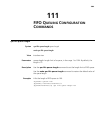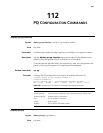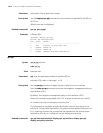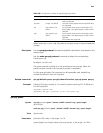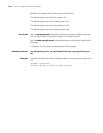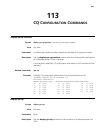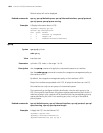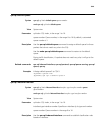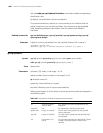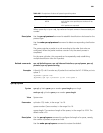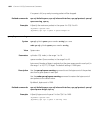
1815
When queue-key is tcp or udp, key-value can be port name or the associated port
number.
Description Use the
qos pql protocol command to establish classification rules based on the
protocol type.
Use the
undo qos pql protocol command to delete the corresponding
classification rule.
By default, no rule is set.
The system matches a packet to a rule according to the set order. When the
packet matches a certain rule, the search process is completed.
For the same pql-index, this command can be repeatedly used, establishing
multiple classification rules for IP packets.
Related commands: qos pql default-queue, qos pql inbound-interface, qos pql queue, qos pq.
Examples # Specify PQ group number to 1 to make IP packets matching ACL 3100 be put
into the top queue.
<Sysname> system-view
[Sysname] qos pql 1 protocol ip acl 3100 queue top
qos pql queue
Syntax qos pql pql-index queue { bottom | middle | normal | top } queue-length
queue-length
undo qos pql pql-index queue { bottom | middle | normal | top } queue-length
View System view
Parameters pql-index: PQL index, in the range 1 to 16.
queue-length: Four length values of priority queues, in the range 1 to 1024.
greater-than Length, 0 to 65535 Any link layer frame greater than the specified
value is enqueued.
less-than Length, 0 to 65535 Link layer frames greater than the specified value
are enqueued.
tcp Port number, 0 to
65535
Any IP packet whose source or destination TCP
port number is the specified port number will be
classified.
udp Port number, 0 to
65535
Any IP packet whose source or destination UDP
port number is the specified port number will be
classified.
-- -- All IP packets are enqueued.
Table 483 Description on values of queue-key and key-value
queue-key key-value Description





